4 Best Browning Trail Cameras in 2024 – Reviews & Top Picks
Last Updated on
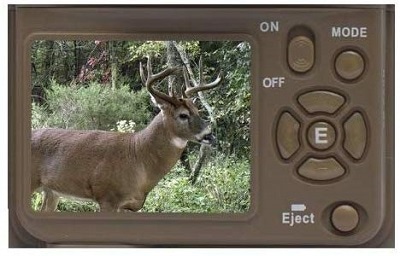
After strategically planting your trail camera in an area you’ve been scoping out for a few weeks, you anxiously await the first sign of your prey. When you go back to check it, you see that the camera has been triggered. Upon closer inspection, you realize that the camera captured nothing, causing you to miss out on an opportunity, all because you didn’t take the time to do a little research before purchasing it.
If you can’t count on your trail camera, then you might as well not even use it. A good trail camera needs to have a quick trigger time, a long detection range, and capture high-resolution shots with great detail. Some HD video would be a definite bonus, too!
All of these factors and more should be considered before picking a trail cam. The following reviews have already taken care of the legwork for you by compiling the information you need to make an informed decision.
After reading this comparison of the four best Browning trail cameras available, you’ll be ready to make a purchase that won’t let you down when you’re out in the field.
A Look at Our Favorite Choices in 2024
| Image | Product | Details | ||
|---|---|---|---|---|
| Best Overall |
 |
Browning Strike Extreme |
|
CHECK PRICE |
| Best Value |
 |
Browning Command Ops |
|
CHECK PRICE |
| Premium Choice |
 |
Browning Spec Ops |
|
CHECK PRICE |
 |
Browning Recon Force |
|
CHECK PRICE |
The 4 Best Browning Trail Cameras
1. Browning Strike Extreme Trail Camera – Best Overall
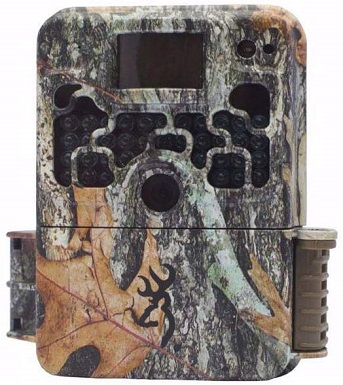
When you need eyes in the field, the Strike Force Extreme has features and reliability that you can depend on to help you see clearly. Equipped with a 16-megapixel camera, you’ll be able to clearly see your prey like never before. If that’s not enough, it’s capable of shooting videos in 720p HD up to two minutes long with full sound. This will allow you to gather vital information such as direction of travel, size, and more, just by looking. With a detection range of 80 feet and a trigger speed as quick as 0.4 seconds, this camera won’t miss anything. Although, in testing the 80-foot detection range feels a little exaggerated.
At night, a flash from your trail camera could spook and alarm your prey. That’s why the Strike Force Extreme is equipped with Infrared LED illumination instead, so you can see clearly without scaring your game. And with 100-foot flash range, you can definitely see clearly. Able to take eight shots in a row, which it stores on a memory card up to 512GB, this camera also saves important information such as date, time, temperature, and moon phase. Powered by six AA batteries.
All in all, we think that this is the best Browning trail camera of this year.
- Can take 720p video up to two minutes long
- Quick trigger speed
- Can take eight consecutive shots
- Infrared flash doesn’t alert prey
- Advertised detection range of 80 feet feels stretched
2. Browning Command Ops Trail Camera – Best Value
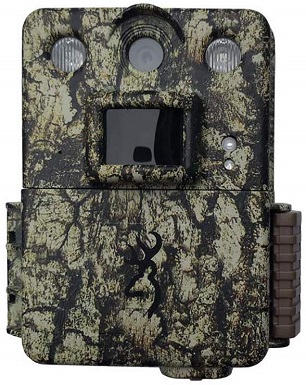
Quality and dependability shouldn’t have to come at the expense of affordability. With the Command Ops Pro trail camera, you get all of the important features bundled into a durable package that comes at a price every hunter can scrape together. While not as high-resolution as our first pick, the 14-megapixel camera will take highly detailed photos to allow you a clear visual of your mark. If you want to step it up even further, this trail camera is equipped with 720p high-definition video recording capabilities as well. Trigger speeds of 0.5 seconds ensure that even the quickest prey gets seen.
Equipped with an infrared flash, this is a trail camera that won’t alert your prey when it takes a picture. The detection range of 70 feet should be sufficient. Although not as illuminating as our first pick, the 70-foot flash range offered by the Command Ops Pro will provide plenty of light to see any prey close enough to trigger it. With all of these features packed in at such an affordable price, it’s an easy argument in defense of the Command Ops Pro as the best Browning trail camera for the money.
- Affordable for any hunter
- 720p HD video capabilities
- 70-foot detection range
- Infrared flash won’t spook game
- 70-foot flash range isn’t the best
3. Browning Spec Ops Trail Camera – Premium Choice
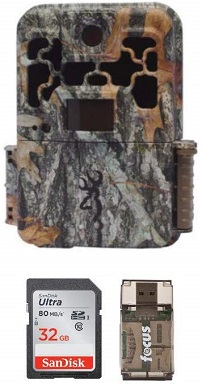
When you hit the bush to check your trail cams, the last thing you want to see is grainy footage or pictures that don’t clearly show your prey. With our premium choice trail camera, the Spec Ops Advantage, you’ll be able to see every detail with absolute clarity. An incredibly high-resolution 20-megapixel camera captures every shot in high definition that looks as good as if you were there in person. Eight rapid-fire images can be taken at once, ensuring you don’t miss anything. If pictures aren’t enough, this camera is also capable of shooting 1080p HD video so you can see your mark up close.
One drawback of many trail cameras is that to see the images and footage you have to insert the memory card into a viewing device such as a computer. The Spec Ops Advantage features a 2-inch built-in viewing screen to check your shots right from the trail. No need to let the tracks get cold, just check your camera and continue the chase. Infrared illumination allows you to take clear images without spooking your prey. Detection range of 80 feet and 0.4-second trigger times mean you’ll never fail to catch the important shots.
- 1080p Video
- 20-megapixel camera
- Built-in viewing screen
- Premium price tag
4. Browning Recon Force Trail-Camera
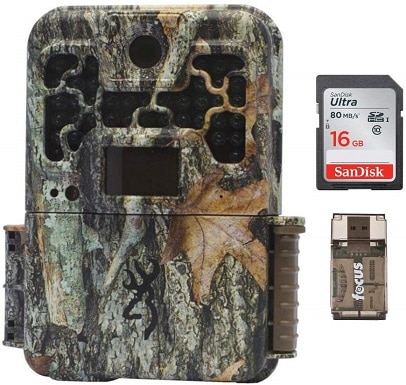
Able to shoot still pictures at 20 megapixels and take high definition 1080p video at 30 or 60fps, the Browning Recon Force Advantage trail camera has top-notch image technology. Smart IR video continues to film as long as the game keeps moving. The flash is also infrared and has three adjustable modes, making it easy to find a setting that won’t alert the game. The detection range is adjustable from 55-80 feet long. The 2-inch color display makes it easy to check your pictures and video right from the trail.
On paper, the Recon Force Advantage is a beast. Of course, you’re also paying a premium for the features packed into this device. Where this camera starts to fall short is actually with the backup battery inside the unit. After opening three units in a row, we discovered that all three had the same problem. The backup battery began leaking, destroying the motherboard. This problem started to develop within the first few months. After a full year of use, this trail camera tends to break down from this issue.
- 20 MP still shots
- 1080p HD video at 30 or 60 fps
- 2-inch built-in color display
- High priced
- Battery backup tends to fail, destroying the motherboard
Related Read: 10 Best Trail Cameras – Reviews & Top Picks
Buyer’s Guide – Finding the Right Browning Trail Camera
Now you know our recommendations for the best Browning trail cameras, but what makes one camera superior to another? Certain features are necessary for a trail camera to fulfill its function. How each camera performs those functions determines how good it really is. In this section, we’re going to go over the most important features that you should be looking for in a trail camera. After reading this buyer’s guide, you’ll be able to understand exactly what makes a trail camera worthwhile and how to pick the best ones.
Image Quality
The whole goal of your trail camera is to let you see the prey when you can’t be there in person. If the image quality is poor and grainy, then you won’t be able to see clearly, and you may miss important details. If you want to be able to count the points on a buck from the image your trail camera captured, then you’ll need a high-resolution image. Megapixels (MP) measure how many pixels are in a camera’s photo. Higher MP ratings mean more total pixels, which captures greater detail.
Video Capabilities
Not all trail cameras offer video recording, but for many people, the superior level of information provided by seeing the wildlife on video is worth finding one that does. Video resolution is measured a little differently than the MP rating for the still images. When looking for video capability, you want your camera to shoot HD video, either 720p or 1080p. 1080p offers a better image and larger size, but 720p is still high-definition and will allow you to see ample detail.
SEE ALSO: our favorite trail camera for home security purposes
Trigger Time
When game moves past a trail camera, sensors on the camera detect the movement and activate the recording. The length of time between the prey passing and the camera taking images is called the trigger time. Shorter trigger times ensure that even quick-moving targets are picked up. Look for trigger times that are 0.5 seconds and faster. Some models even have an adjustable trigger time so you can dial it in to your exact liking.
Detection Range
In a perfect world, your game would walk by your camera at just the perfect distance and speed to make sure that it’s all caught on tape for you. Reality is rarely that nice and neat. Likely, your prey will be passing by your camera at a distance. The farthest distance at which your camera can pick up movement and trigger recording is called its detection range. Naturally, a longer detection range means you have a better chance of getting a good shot of your mark when it saunters by.
Built-in Viewing Screen
When was the last time you brought a laptop out into the bush? For most of us, the answer is never. The wilderness doesn’t tend to be a great environment for expensive electronics. Unfortunately, most trail cameras record to an external memory disk that must then be inserted into a computer if you want to see the images and video. Clearly, this complicates things quite a lot. Fear not, there is a solution! Some high-end trail cameras come with a viewing screen built-in that allows you to see your footage and your stills right from the device. The convenience of being able to get all the relevant information from right there in the field and then pick back up on the trail cannot be overstated. If you can afford the premium price tag, this is one feature that we think really is worth the extra cost.
More trail camera posts we recommend reading:
- A comparison of cellular and wireless trail cameras
- Is it possible to find a good trail camera under $50?
- Our recommendations for no-glow trail cameras

Conclusion
When you’re on the hunt, the last thing you want to be worrying about is whether or not your trail camera will capture the important shots. By reading these reviews, you’ve learned enough about each of these popular trail cameras to make an educated decision about which one to purchase.
Our top pick, the US Strike Force Extreme, has all the most important features at a reasonable price point. 16MP camera, 80-foot detection range, and infrared flash all help make this a solid choice for any hunter or wildlife enthusiast. For the best value overall, we feel the Command Ops Pro is hard to beat. With 720p HD video capabilities and infrared flash available at a price that’s affordable for most people. If you want the most premium feature set and you’re willing to spare no expense, then the Spec Ops Advantage is our pick for premium choice. 1080p HD video recording, a 20MP still camera, and a built-in 2-inch screen all add up to make this premium-priced trail camera our favorite high-end recommendation.
You’re armed with the information you need, now go hunt down the right trail camera to help you bag the big game.
We also recently wrote an article about how to hide your trail camera. Feel free to check it out.
About the Author Robert Sparks
Robert’s obsession with all things optical started early in life, when his optician father would bring home prototypes for Robert to play with. Nowadays, Robert is dedicated to helping others find the right optics for their needs. His hobbies include astronomy, astrophysics, and model building. Originally from Newark, NJ, he resides in Santa Fe, New Mexico, where the nighttime skies are filled with glittering stars.
Related Articles:
How to Clean a Refractor Telescope: Step-by-Step Guide
How to Clean a Telescope Eyepiece: Step-by-Step Guide
How to Clean a Rifle Scope: 8 Expert Tips
Monocular vs Telescope: Differences Explained (With Pictures)
What Is a Monocular Used For? 8 Common Functions
How to Clean a Telescope Mirror: 8 Expert Tips
Brightfield vs Phase Contrast Microscopy: The Differences Explained
SkyCamHD Drone Review: Pros, Cons, FAQ, & Verdict



